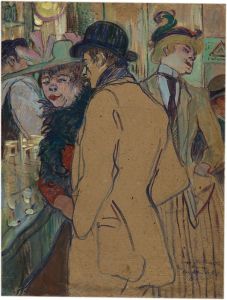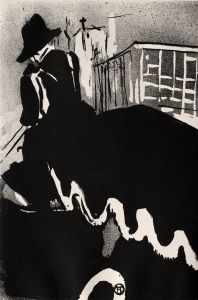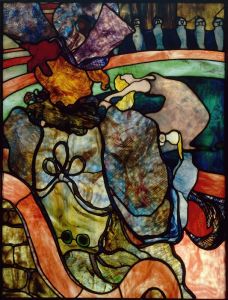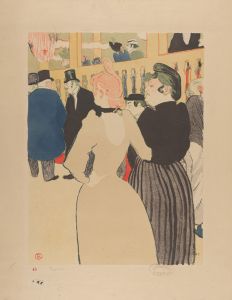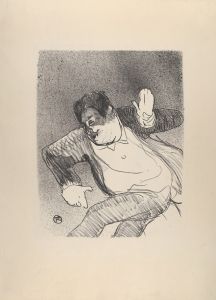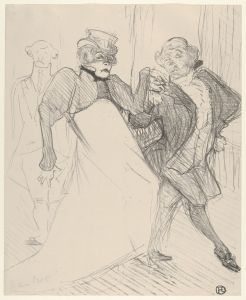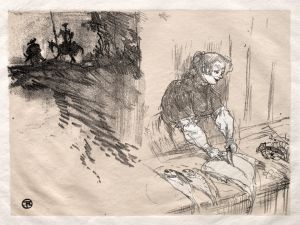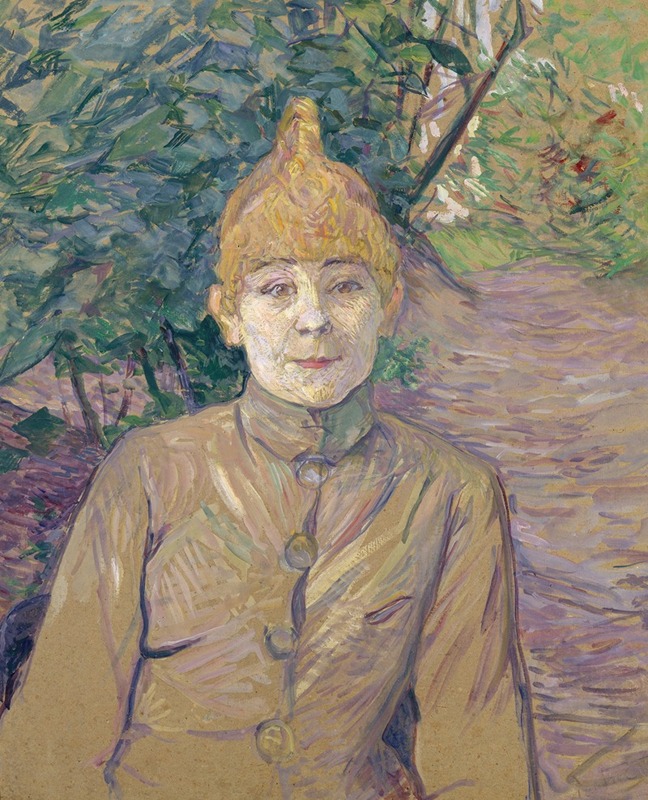
The Streetwalker
A hand-painted replica of Henri de Toulouse-Lautrec’s masterpiece The Streetwalker, meticulously crafted by professional artists to capture the true essence of the original. Each piece is created with museum-quality canvas and rare mineral pigments, carefully painted by experienced artists with delicate brushstrokes and rich, layered colors to perfectly recreate the texture of the original artwork. Unlike machine-printed reproductions, this hand-painted version brings the painting to life, infused with the artist’s emotions and skill in every stroke. Whether for personal collection or home decoration, it instantly elevates the artistic atmosphere of any space.
Henri de Toulouse-Lautrec, a prominent French painter, printmaker, and illustrator, is known for his vivid portrayal of late 19th-century Parisian life. One of his notable works is "The Streetwalker," a painting that captures the essence of the urban underbelly during the Belle Époque period. Toulouse-Lautrec's work often focused on the bohemian lifestyle of Paris, and "The Streetwalker" is no exception, offering a glimpse into the world of the city's marginalized individuals.
"The Streetwalker" is believed to have been painted around 1890-1891, a period when Toulouse-Lautrec was deeply immersed in the Montmartre district of Paris. This area was known for its vibrant nightlife, cabarets, and the presence of many artists and performers. Toulouse-Lautrec was a frequent visitor to these venues, where he found inspiration for much of his work. His paintings often depicted the lives of dancers, singers, and prostitutes, capturing their daily existence with empathy and a keen eye for detail.
In "The Streetwalker," Toulouse-Lautrec employs his characteristic style, marked by bold lines and a muted color palette. The painting depicts a solitary woman walking along a street, her expression inscrutable yet poignant. The background is rendered with minimal detail, focusing the viewer's attention on the subject. This approach is typical of Toulouse-Lautrec's work, where the emphasis is placed on the human figure and the emotions conveyed through posture and expression.
Toulouse-Lautrec's portrayal of the streetwalker is both realistic and compassionate. He avoids romanticizing or sensationalizing her life, instead presenting her as a dignified individual navigating the complexities of her environment. This empathetic depiction is a hallmark of Toulouse-Lautrec's art, reflecting his deep understanding of and respect for the people he painted.
The painting is also notable for its use of color and composition. Toulouse-Lautrec was influenced by Japanese ukiyo-e prints, which is evident in the flat areas of color and the strong outlines that define the figure. This influence, combined with his innovative use of perspective and cropping, gives the painting a modern feel that was ahead of its time.
"The Streetwalker" is housed in the Musée Toulouse-Lautrec in Albi, France, which holds the largest collection of the artist's works. The museum is located in the Palais de la Berbie, a former bishop's palace, and offers a comprehensive overview of Toulouse-Lautrec's career, from his early works to his most famous pieces.
Henri de Toulouse-Lautrec's work, including "The Streetwalker," continues to be celebrated for its unique perspective on Parisian life and its contribution to the development of modern art. His ability to capture the essence of his subjects with honesty and sensitivity has ensured his place as one of the most important artists of his time.






